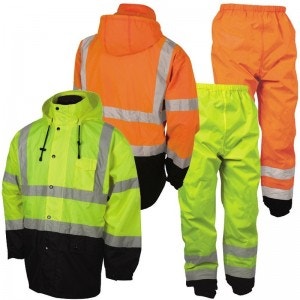Be Safe - No White at Night
- Feb 12, 2013

Here's a fantastic video showing the pros of hi visibility active wear (same goes for workwear) and the cons of wearing just white in order to be seen at night by automobiles, roadside construction crews and other heavy industrial equipment.
On average, a pedestrian is killed in a traffic crash every 113 minutes.
A pedestrian is injured, on average, every 8 minutes.
NHTSA Traffic Safety facts 2007
As runners, walkers and bikers hit the road to train after work, it's critical to remember 4 simple words - No White at Night!
This video is very interesting. It shows that at 1,000 feet, three runners are visible, all wearing high vis apparel.
At 500 feet, someone else enters into sight.
At 250 feet, all three hivis runners are still easily seen, but now two other runners are barely visible just behind them.
And finally, at 100 feet, all three of the high viz runners can still be plainly seen, as can the colors of their running gear, but we soon realize there are now four runners in white, not just two.
Drivers moving at just 30 mph may travel a distance over 500 feet before they are able to properly manuever their car in response to an obstacle.
Data from the National Safety Council, Walk Alert National Pedestrian Safety Program, FWHA RD 89-022, (1989 Program Guide, NSD 1989)

High visibility Storm Cover rainwear jacket made with 150-denier polyester oxford fabric with white PU coating on backside (water-proof material) and sealed seams. Features include a black-bottom design to maintain a clean appearance, 2-inch wide VizLite reflective material, zipper/storm flap closure, non-sparking snaps and zipper, adjustable wrist cuffs, lower front patch pockets with snap closures, and a left chest radio pocket. The jacket is available in Lime and Orange, and is ANSI Class 3 compliant.
- 150-denier polyester oxford fabric with white PU coating on backside with sealed seams
- Black-bottom design for clean appearance
- 2-inch wide VizLite reflective material
- Zipper/storm flap closure, non-sparking snaps and zipper, adjustable leg cuffs, lower front patch pockets w/ snap closures, left chest radio pocket
- Available in Lime and Orange
- ANSI Class 3 compliant
The ML Kishigo RWP102/RWP103 Rain Pants are sold as a separate product. Click the link to see it.



